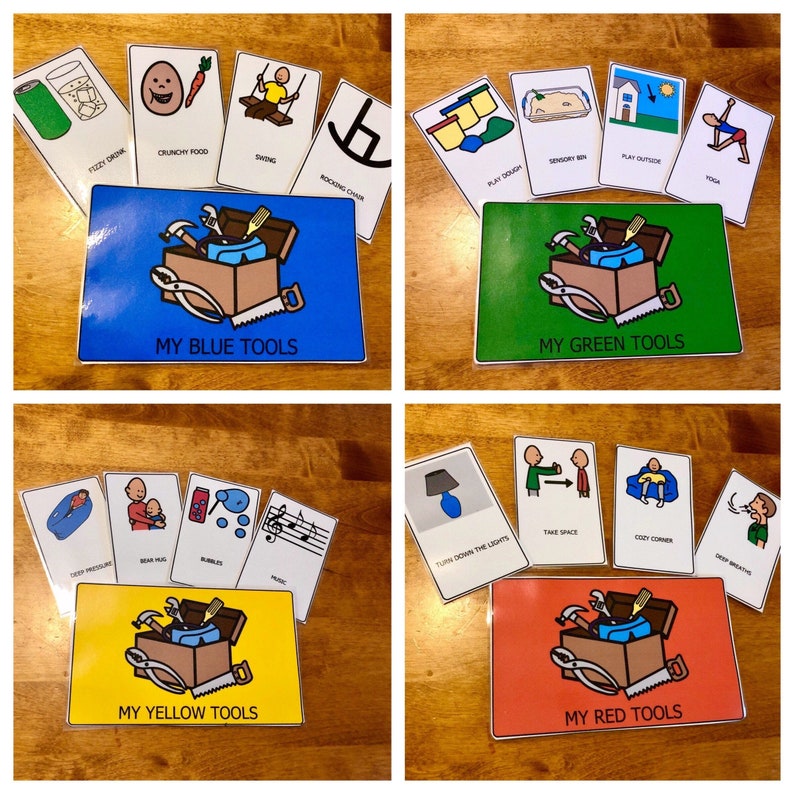Self Regulation Tools For Students
Self-regulation is an essential skill that helps students manage their emotions, behavior, and attention. To support students in developing this important skill, we have gathered a collection of self-regulation tools that are easy to implement and engaging for students. In this post, we will explore some of these tools and provide resources that can be used in the classroom or at home. Let's dive in!
1. Visual Tools and Worksheets

Visual tools and worksheets are a great way to introduce self-regulation to students. These resources provide visual cues and prompts that help students understand and practice self-regulation strategies. They can be used in both individual and group settings, making them versatile for different learning environments.
2. Easy-to-Implement Self-Regulation Tools

Implementing self-regulation tools in the classroom doesn't have to be complicated. With these easy-to-implement tools, you can promote self-regulation skills effortlessly. Whether it's a calming corner, breathing exercises, or sensory activities, these tools are designed to support students in managing their emotions and staying focused.
3. Interactive Games and Activities
Engage your students in learning self-regulation through interactive games and activities. These resources make self-regulation fun and enjoyable for students of all ages. From online games to printable activities, there are numerous options to choose from. Encourage students to practice self-regulation skills independently or collaborate with their peers for a more interactive experience.
Frequently Asked Questions
- Why is self-regulation important for students?
- How can I incorporate self-regulation tools in my classroom?
- Are these self-regulation tools suitable for all age groups?
Self-regulation is important for students because it helps them manage their emotions, behavior, and attention. It allows them to stay focused, make better choices, and handle challenging situations effectively. Developing self-regulation skills early on can lead to improved academic performance and overall well-being.
There are many ways to incorporate self-regulation tools in your classroom. You can create a dedicated calming corner where students can engage in self-regulation activities, use visual tools and worksheets during lessons, and integrate interactive games and activities to make learning self-regulation more engaging. It's important to create a positive and supportive environment that encourages students to practice and develop their self-regulation skills.
Yes, these self-regulation tools can be adapted for different age groups. While some resources may be more suitable for younger students, such as picture cards or coloring sheets, there are also tools available for older students, such as guided meditation apps or journaling prompts. It's important to choose resources that are age-appropriate and align with the developmental needs of your students.
In conclusion, self-regulation tools provide valuable support for students in managing their emotions, behavior, and attention. By incorporating these tools into the classroom or home environment, educators and parents can empower students to develop lifelong self-regulation skills. From visual tools and worksheets to interactive games and activities, there are a variety of resources available to make self-regulation engaging and enjoyable. Foster a culture of self-regulation, and watch your students thrive!
Self Regulation Visual Tools And Worksheets | Student Encouragement
 Image Source : www.pinterest.co.uk
Image Source : www.pinterest.co.uk Easy-to-Implement Self Regulation Tools | Self Regulation Kindergarten
 Image Source : www.pinterest.com
Image Source : www.pinterest.com self regulation tools kindergarten activities young social skills choose board develop students
Self-regulation Tools To Teach Social Skills To Young Learners
 Image Source : www.pinterest.com
Image Source : www.pinterest.com regulation self tools social activities skills emotional worksheets visual choose board coping teaching school
Self Regulation Visual Tools And Worksheets - Teaching Exceptional Kinders
 Image Source : teachingexceptionalkinders.com
Image Source : teachingexceptionalkinders.com Self-Regulation Tool Box Sensory Processing Disorder Sensory Diet Tools
 Image Source : brainchild.net
Image Source : brainchild.net Zones Of Regulation Strategies Printable - Best 25+ Self Regulation
 Image Source : rallysportrayn210.blogspot.com
Image Source : rallysportrayn210.blogspot.com zones emotional behaviour regulations each calming listening coping
Self-Regulation Skills Guaranteed To Help Kids In The Classroom – Proud
 Image Source : www.pinterest.com
Image Source : www.pinterest.com self regulation proudtobeprimary anger calming esteem zones empathy
Pin On WholeHearted School Counseling TPT Pins
 Image Source : www.pinterest.com
Image Source : www.pinterest.com strategies calm self coping regulation calming skills students corner kids classroom toolbox school mindfulness counseling wholehearted choose board teacherspayteachers trauma
Self-regulation tool box sensory processing disorder sensory diet tools. Self regulation proudtobeprimary anger calming esteem zones empathy. Strategies calm self coping regulation calming skills students corner kids classroom toolbox school mindfulness counseling wholehearted choose board teacherspayteachers trauma. Easy-to-implement self regulation tools. Self-regulation skills guaranteed to help kids in the classroom – proud